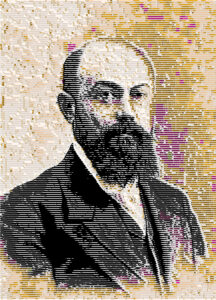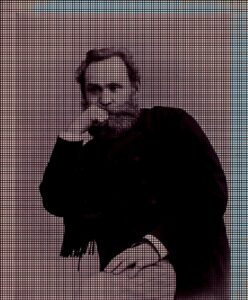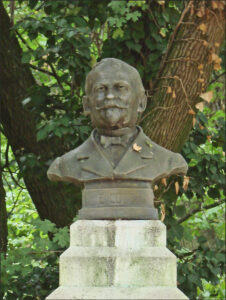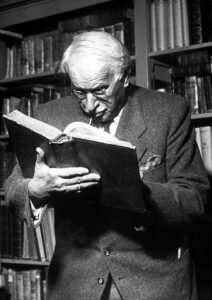Nine psychologists in the history of hypnosis
Nine psychologists in the history of hypnosis
Nine psychologists in the history of hypnosis
Contents
There is evidence of hypnotic-like phenomena in many prehistoric cultures. When the author of Genesis states that God induced Adam “into a deep sleep” in order to take his rib and form Eve, he appears to be aware of the anesthetic effects of hypnosis. According to other historical accounts, hypnosis was employed in ancient Egyptian rites and by the Delphic oracle (Hughes and Rothovius, 1996). The current history of hypnosis began when French physician Anton Mesmer rekindled interest in the practice in the late 1700s.
Franz Anton Mesmer

Franz Anton Mesmer, the first of nine psychologists in the history of hypnosis, was born in Vienna between 1734 and 1715. Mesmer is credited as founding the field of hypnosis. He is best known for coining the term “mesmerism,” which denoted a technique for putting subjects into a trance through repeated passes of his hands and/or magnets. He worked with the animal magnetism (electromagnetic and psychic energies) of individuals. Despite his great success in treating a wide range of illnesses, the medical community eventually discredited him. His achievements infuriated the medical establishment of the day, which set up an official inquiry committee set up by the French government. Benjamin Franklin, the American ambassador to France at the time, and Joseph Guillotine, a French physician who invented a foolproof method of physically severing the mind from the body, were members of this committee.
James Braid

James Braid, an English physician who lived from 1795 to 1860, was initially against mesmerism, as it was then called, but later developed an interest in it. He claimed that suggestions, not animal magnetism, were what caused cures. Because he believed the phenomenon to be a type of sleep, he created the eye fixation method (also known as braidism) to induce relaxation. He named it hypnosis, after the Greek deity of sleep, Hypnos. Later, after discovering his mistake, he attempted to rename the concept to monoeidism, which means the influence of a single thought, but the previous term endured.
Jean-Marie Charcot

French neurologist Jean Marie Charcot (1825–1893) disagreed with the Nancy School of Hypnotism, arguing that hypnosis was only a symptom of hysteria. Charcot and the Nancy group (Liebault and Bernheim) were fierce rivals. He recognized the three stages of trance—somniambulism, catalepsy, and lethargy—and reintroduced Mesmer’s notion of animal magnetism.
Disagreeing with the Nancy School of Hypnotism, Jean Marie Charcot maintained that hypnosis was only a symptom of hysteria.
Pierre Janet

After learning that hypnosis may help people relax and recover, French psychologist and neurologist Pierre Janet (1845–1947) changed his mind about using it. During psychoanalytical anger, Janet was among the few individuals who maintained her interest in hypnosis.
Ivan Petrovich Pavlov

1860s–1936 Russian psychologist Ivan Petrovich Pavlov actually spent more time studying the digestive system. His creation of the theory of the conditioned reflex, often known as stimulus response, is what made him most famous. In his famous experiment, he trained hungry canines to salivate at the sound of a bell, which was previously connected to the sight of food. His research on digestive secretions earned him the 1904 Nobel Prize in Physiology. Despite having nothing to do with hypnosis, his stimulus response theory—which is particularly important in NLP—is a fundamental concept for anchoring and connecting actions.
Emile Coue

Emile Coue, 1857–1926, physician, created the Laws of Suggestion. In addition, he is well known for advising his patients to repeat to themselves, twenty to thirty times a night, before they turn in, “Everyday, in every way, I am getting better and better.” Additionally, he found that offering encouraging advice in addition to prescription drugs worked better than just supplying the drugs themselves. After a while, he gave up on the idea of hypnosis and began to use suggestion alone, believing that hypnosis and the hypnotic state reduced the effectiveness of the suggestion.
Coue’s Laws of Suggestion
The Law of Concentrated Attention
” Whenever attention is concentrated on an idea over and over again, it spontaneously tends to realise itself”
The Law of Reverse Action
“The harder one tries to do something, the less chance one has of success.”
The Law of Dominant Effect
“A stronger emotion tends to replace a weaker one.”
Sigmund Freud

1856–1939: Sigmund Freud, one of the most famous of our nine psychologists in the history of hypnosis, studied with Liebault and Bernheim at Nancy, followed by more research with Charcot. However, Freud believed that hypnosis deprived patients of their barriers, that he could not hypnotize patients deeply enough, and that the cures were only transitory; thus, he did not utilise hypnosis in his therapeutic work. Given his parental demeanor, Freud was seen as a subpar hypnotist. Nevertheless, he frequently unintentionally carried out nonverbal inductions when he placed his palm on a patient’s head to symbolise the doctor’s dominating and the patient’s submissive roles. His patients frequently entered trances as a result. Hypnosis was virtually completely disregarded as a result of his early rejection of it in favour of psychoanalysis.
Carl Jung

Carl Jung (1875–1961) was a pupil and associate of Sigmund Freud who abandoned the psychoanalytical method and pursued his own passions. He created the theories of archetypes and the collective unconscious. He did not use active hypnosis, but he did advise his patients to modify recollections of the past through active imagination. In his therapeutic practice, he frequently invoked the idea of the inner guide. He felt that astrology and the I Ching were useful methods for accessing the inner consciousness. The medical establishment dismissed him as a mystic. Nonetheless, healers continue to actively support a number of his beliefs and ideals today.
Milton Erickson

The last of our nine psychologists in the history of hypnosis (1932–1974), psychologist and psychiatrist Milton Erickson, invented the technique of indirect suggestion. In contemporary hypnotherapy, he is regarded as the father. He used a variety of verbal and nonverbal pacing strategies, such as metaphor, confusion, and many more, to avoid using the conscious mind. His vibrant personality has had a significant impact on modern hypnotherapy practices and the AMA’s formal recognition of them. Neuro-Linguistic Programming (NLP) by Bandler and Grinder was developed using his work as well as that of Satir and Perls.
Adel Seyam
Paris 2005
Read Also







Comment (1)
Maria Ferreira
Very interesting information